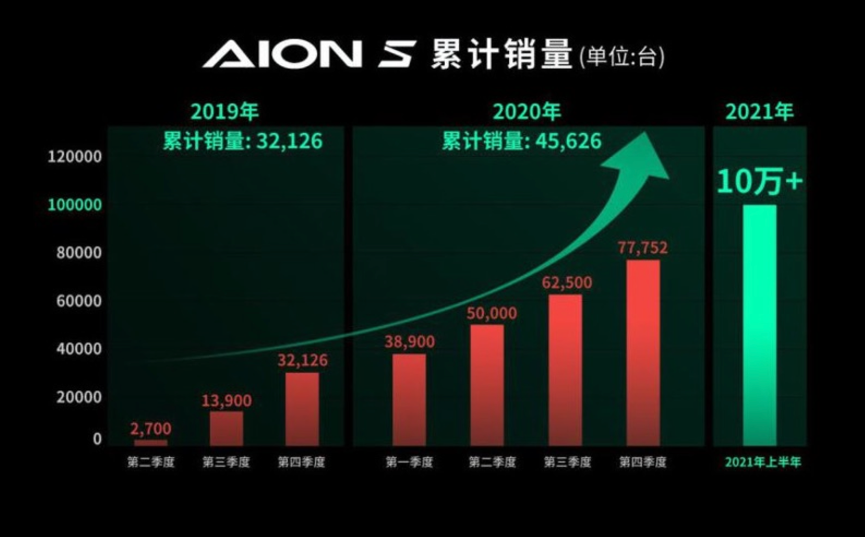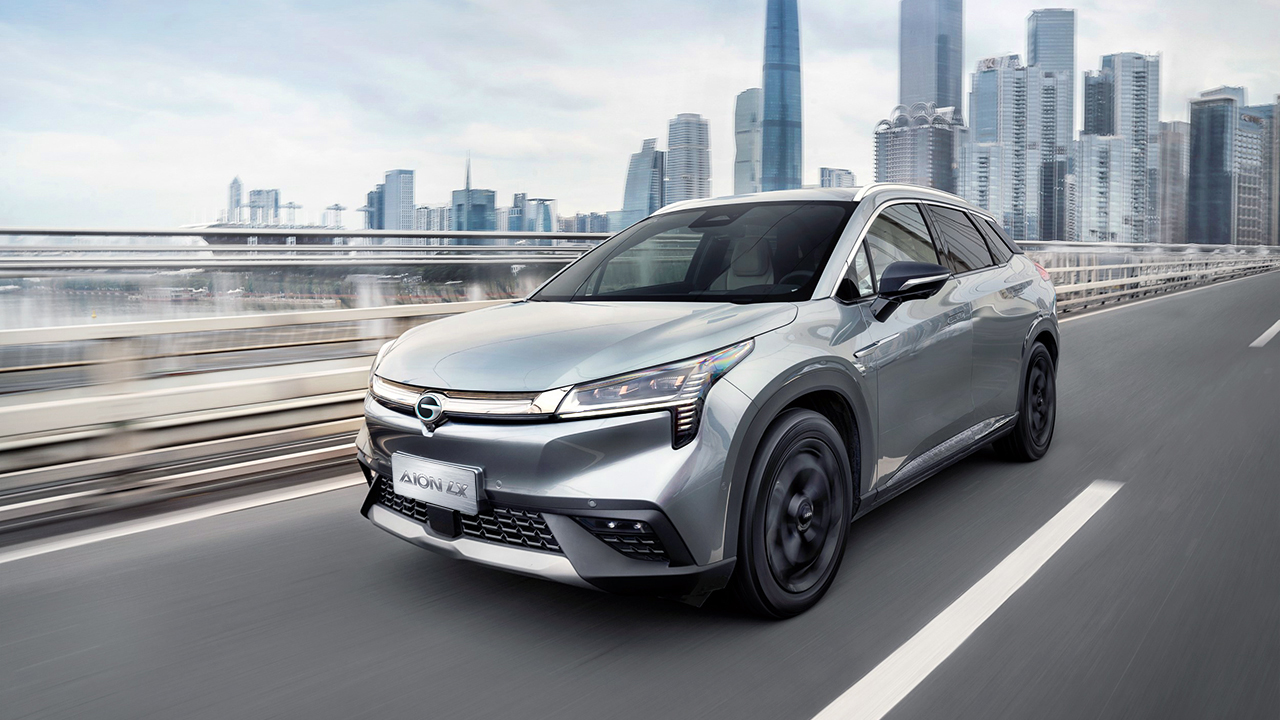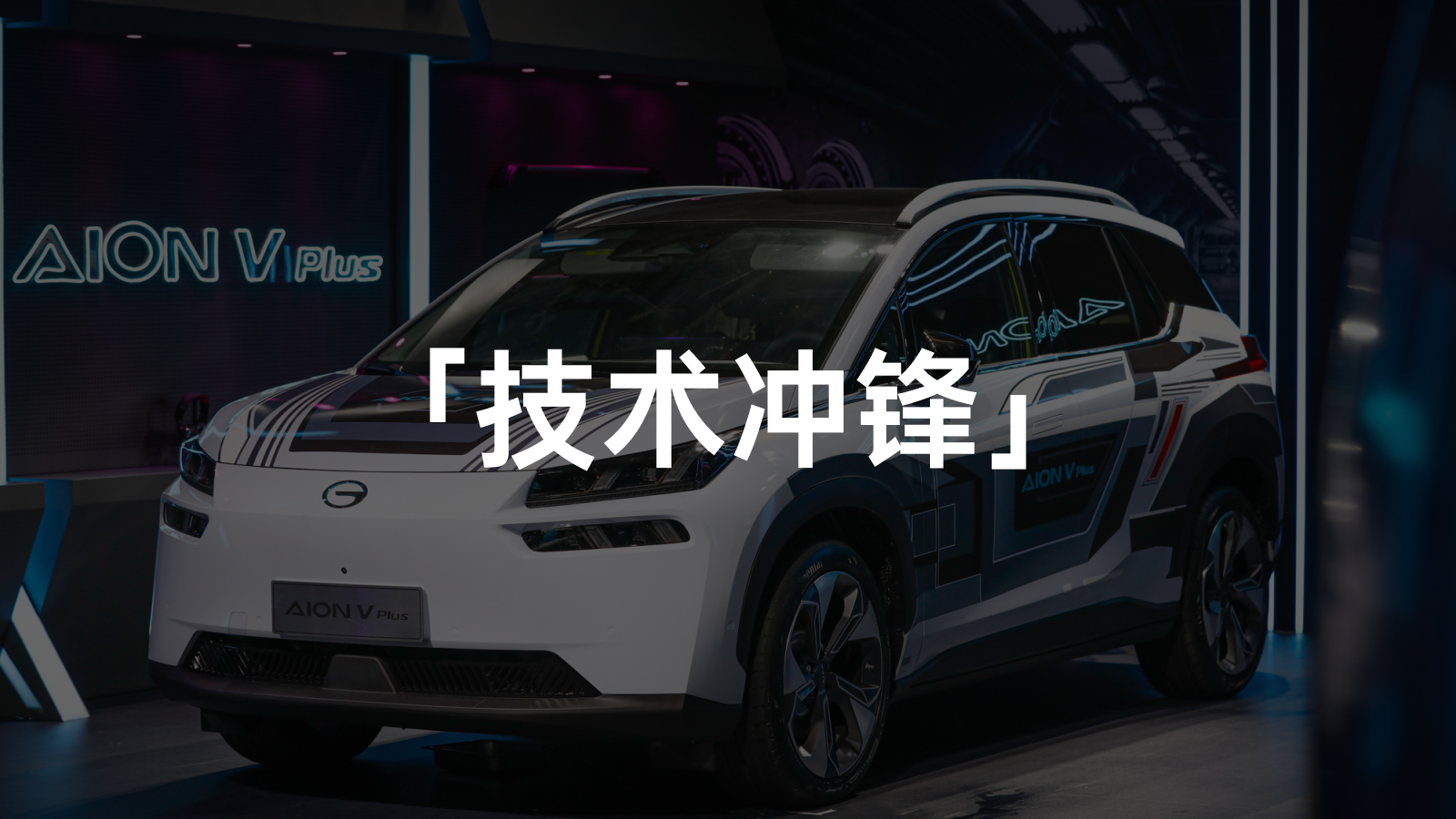Recently, I went to Guangzhou and experienced the AION V Plus, a car model from GAC AION before its official release. Although the test drive was not long, I focused on experiencing the Navigated Driving Assist (NDA) feature loaded on the AION V Plus. Frankly speaking, as someone who has tried many high-speed navigation function models, the impression left by NDA on me far exceeded the function itself, which made me rethink my previous views on GAC AION.
Yes, I reviewed this car manufacturer’s various breakthroughs in different fields and saw a different GAC AION through NDA.
First traditional car manufacturer with high-speed navigation function
The NDA of GAC AION V Plus, Navigated Driving Assist, refers to the navigation driving assistance system. According to the official explanation, the system can perform autonomous overtaking, lane changes, entrance and exit ramps, ramp passage, merging into the main road, etc. based on the guidance of the navigation route or the surrounding traffic environment.
Before explaining, we still need to understand AION V Plus’s entire perception system:
• 6 cameras;
• 12 ultrasonic radars;
• 5 millimeter-wave radars.
As the first domestic traditional brand to achieve a breakthrough in high-speed navigation, GAC AION indeed surprised me during the test drive. I will restore the overall user experience according to the usage process.
Through voice, I set the travel destination before departure. After driving the AION V Plus, I observed the driving assistance button located on the right side of the steering wheel. First, press the adaptive cruise button, then press the integrated cruise button, and the ADiGO system has been fully opened, waiting only for coverage in the high-precision map area.
First, the entire system’s visualization display deserves praise. Three lanes are displayed on the 12.3-inch meter, through modeling to clearly convey information about trucks, SUVs, pedestrians, etc. And also directly reflect the virtual and solid lines of this lane on the screen. We have previously expressed multiple times that excellent visualization will greatly enhance the driver’s trust in vehicle assistance/autonomous driving systems, thereby increasing the usage rate and frequency of the entire system.
When entering the high-precision map range, the ADAS system will automatically switch to NDA. Visually, the central control screen navigation will remind the driver with a lit NDA icon; while audibly, the voice assistant will announce “driving assistance system activated” to ensure the driver’s awareness.
NDA gives me a relatively stable feeling overall. After activating NDA, the vehicle generally will not switch to the leftmost lane, but instead mostly travels in the center lane, which is the lane that is least prone to errors and easiest to make a choice. Although changing lanes by signaling is relatively straightforward, in NDA mode, if encountering a slow car in front of the vehicle, the system will first make a judgment and then make a pass decision. This is similar to most current high-speed navigation functions. When changing lanes, it also includes active speed reduction, which is still core to ensuring safety. Only after completing the lane change will NDA accelerate again to reach the set speed, but there is still room for improvement in terms of user experience. Although NDA can obtain the current speed limit of the road through cameras or map information, it will still travel at the cruising speed you set.
On a high-speed road, when there is a large truck in the adjacent lane, the system will actively avoid 30 cm in the opposite direction. This 30 cm further increases the driver’s trust in NDA. It can be seen that GAC Aion has carefully considered the user’s real usage environment.
In the navigation route, it covers different high-speed road changes and involves the situation of entering and exiting the ramp. The system obtains the route in advance through high-precision maps, and merges into the rightmost lane and ultimately enters the ramp. In the ramp, the vehicle actively reduces speed based on the slope data from high-precision maps and recognition of lane lines from cameras, thus improving the over-turning completion rate. The official claim is that it can pass through ramps with a minimum radius of 50 m.
Overall, GAC Aion’s NDA system can basically achieve the advertised features, with the highlights being the visual display, prominent switch reminders, and humanized active avoidance of large vehicles, but it is not the final mass-produced version yet. As for how to evaluate this ADiGO 3.0 intelligent driving assistance system, we need to wait for the mass production and delivery of the vehicles, obtain the actual car, and perform specific tests in 42Mark to give a relatively objective score.
To me, the functionality of NDA did not give me a great shock, because I have tried many models that are equipped with high-speed navigation functions. Instead, GAC Aion’s bold and rapid promotion and mass application of new technologies caught me off guard. Because in my impression, traditional car companies’ response to high-tech was relatively slow. Of course, you can say it is being conservative and cautious, but this hesitation has indeed affected the speed of landing of new technologies, and it is also a constraint for traditional car companies’ transformation.In fact, Guangqi Aion has been laying out its ICV (Intelligent Connected Vehicle) strategy early on, and in recent years, its technological breakthroughs have put it ahead of traditional domestic automakers. At first, I was surprised by this situation, thinking it was nothing but another marketing game, but as I learned more about Guangqi Aion, I found that all the appearances bore fruit because the seeds had been planted many years ago.
Guangqi Aion follows the “EV+ICV” technology route, and in its mixed-ownership reform plan of August 30, 2019, it emphasized this route again. As to EV, this timeline can be traced back to May 2011 when GAC started the AE (HEV) project. In September 2014, the GA5 REV model was launched, which was the first extended-range electric vehicle supported by the national 863 program. In 2017, GAC and its partner invested RMB 45 billion to build the GAC New Energy Automotive Industry Park and a new energy vehicle company specializing in pure electric vehicles. At the same time, they spent RMB 3 billion to take the lead in developing a pure electric-exclusive platform. By the end of 2018, GAC had built China’s first exclusive pure electric factory. Aion S, Aion V Plus, Aion LX, and Aion Y are now under Aion’s banner, and the total sales exceeded 180,000 units. Notably, Aion has its own GEP 2.0 pure electric-exclusive platform, magazine batteries, ultra-fast batteries, sponge silicon negative electrode batteries with a range of 1,000 km, and other technological products that other automakers lack.
On the other side, Guangqi Aion’s layout in ICV can be traced back to 2015, when it gradually invested in companies such as Audewei, YBJ, China Unicom Smart Connection, Jingwei Hengrun, and Gatlan in the fields of sensors, vehicle networks, electronic systems, and millimeter-wave radar.
As the competition between ICV in hardware and software has gradually entered a white-hot stage in recent years, there has been a sudden surge in methods such as “hardware first and software upgrade” and “futures delivery.” However, I discovered that Guangqi had developed its own first-generation unmanned driving concept car, WitStar, as early as 2013 through some archaeological research.Translate the Chinese Markdown text below into English Markdown text in a professional manner, retaining the HTML tags inside Markdown, and only outputting the result:
Although the sound of electric vehicles was very quiet at the time, in 2015, two years later, the WitStar concept car using range-extender technology appeared directly at the home of oil cars–the North American International Auto Show in Detroit.
According to the reports at that time, the first-generation WitStar could achieve point-to-point unmanned automatic driving. If the appearance of WitStar was a flash in the pan of technological development, Guangzhou Automobile Group (GAC) was fortunate to make progress in the long investment cycle technology of unmanned driving, and launched the WitStar II, or the second generation unmanned vehicle, in 2017.
The second-generation unmanned car is named WitStar II QiJi, which adopts 64-thread mechanical LiDAR, 360-degree panoramic cameras, 77 G mm wave radar, and a series of related technologies such as autonomous traffic scene perception, autonomous driving behavior decision-making, low-latency intelligent control to preliminarily achieve L4 level of auxiliary/automatic driving capability, facing multiple road conditions.
CCTV has reported on WitStar II. At the “2017 China Intelligent Vehicle Future Challenge”, WitStar II won second place overall, while “Discoverer”, jointly developed by GAC and Xi’an Jiaotong University, won first place.
Looking back at these things, it has to be said that GAC’s launch of the WitStar unmanned autonomous vehicle was very forward-looking. In terms of technology route selection and autonomous driving strategy formulation, GAC should have gained a lot of experience through the WitStar project, and be more at ease than the current flood of imitators in terms of technical choices.
GAC Aion ICV’s “Present Tense”
If WitStar unmanned vehicle was a forward-looking attempt, then the ADiGO intelligent driving connected ecology system is a technological realization of assisted/autonomous driving and intelligent cabin landing in mass-produced cars.
In the era of ADiGO 2.0, this system can achieve basic L2 functions, such as TJA traffic congestion assistance, ICA integrated cruise assistance, APA automatic parking assistance, etc. It was also the first to be used in the AION S. By the first half of this year, AION S had sold over 100,000 units, which is an achievement for GAC Aion.
The perception hardware of AION V Plus is consistent with that of AION LX, the flagship SUV of GAC Aion, which we mentioned earlier, including 23 sensors that belong to ADiGO 3.0 intelligent driving assistance system. High-precision map function for high-speed navigation and mobile summoning of parking have been equipped on AION LX last year. In terms of intelligent cockpit, ADiGO 3.0 intelligent driving and interconnection ecosystem, installed on AION LX, has already used technologies such as Qualcomm Snapdragon 8155 chipset and integrated 5G V-BOX communication system, and become the launching pad of the world’s first 5G car – AION V.
Although functions such as high-speed navigation in the ADiGO 3.0 intelligent driving and interconnection ecosystem are only available on GAC Aion’s flagship SUV, the ADiGO intelligent driving assistance system has been equipped on AION S, AION Y, and the older model AION V, and these models have gained massive data from C-end users as sales boost. Data is a huge asset for a carmaker, even though OEMs can quickly gather large amounts of data through self-produced models, the majority of traditional car companies, from what I see, struggle to make proper use of this data.
After one year of development, the ADiGO intelligent driving and interconnection ecosystem has now entered the 4.0 era, which includes the ADiGO 4.0 intelligent cockpit and the ADiGO 3.0 intelligent driving assistance, and meanwhile, the ADiGO 3.0 intelligent driving assistance system has become standard equipment of the more popular AION V Plus model and will be delivered in October. GAC’s rapid iteration of the ADiGO intelligent driving and interconnection ecosystem indicates a lot of things. It shows that GAC Aion is not only pushing forward ICV (Intelligent Connected Vehicle) at a faster pace, but also transforming from simple integration of supplier materials to the utilization of massive data from old users to modify functions and accelerate self-research and development. Iteration of ICV-related technology is just a subsidiary task.
Overall, GAC Aion may not be as radical and rapid as new domestic forces in terms of ICV, aggressively adding technology ingredients to its products, but considering those traditional car companies who have fought side by side before, current electric vehicle models still suffer from the embarrassing point of “high endurance mileage” as their main sales pitch. GAC Aion has opened a window for rapid breakthroughs in the automotive industry by leveraging both EV and ICV.### The Future of GAC Aion’s ICV
As sales increase, GAC Aion is utilizing data to accelerate the consolidation of its advantage in the ICV field. Despite being in the midst of the entire new energy market, the various technologies being promoted by GAC Aion have strengthened the attractiveness of its products to consumers.
At present, regarding assisted/autonomous driving technology, GAC Aion still relies heavily on top-tier suppliers, with work remaining focused on integration. For example, the assisted driving system mainly relies on support from Bosch, while the parking solution for the AION V Plus comes from Baidu, and the driver monitoring solution uses Horizon’s J2 chip.
In the short term, the advantage products of top-tier players in the industry are indeed a good choice that performs well and is not prone to errors in actual user experience. However, in the long run, self-development of hardware and software has become a common understanding among players in the industry.
When I last test drove the vehicle, I also learned about some of GAC Aion’s future strategies. GAC’s self-developed assisted/autonomous driving system will appear in next year’s AION LX and will also use GAC’s second-generation intelligent variable-focus laser radar, achieving L4 level assisted/autonomous driving capability.

The second-generation intelligent variable-focus laser radar was globally launched for the first time by GAC Aion on July 26th this year. It can achieve variable refresh rates (10-30Hz) and resolutions (0.2°~0.05°), in short, recognizing both speed and distance with corresponding improvements.
By 2023, GAC Aion will also launch a new hardware platform and equip it with a new EEA, which may have evolved to approximately 3 functional domains, corresponding to power, interconnectivity, and autonomous driving.
Of course, eggs should not be put all in one basket, and the exploration of technology is never a one-step process. While GAC Aion currently purchases and uses top-tier supplier products, it also forces internal team efficiency to improve. Most importantly, with strong sales and rapidly improving technological capabilities, GAC Aion can completely avoid the dilemma of choosing between “soul and shell”.
GAC has currently established partnerships with Tencent, Baidu, iFlyTek, and other companies. Since 2017, it has signed strategic cooperation agreements twice with Huawei to jointly build a new generation of intelligent network-connected vehicle platforms. Huawei’s performance in the ICV field, I believe, speaks for itself. And this year, the collaboration between GAC Aion and Huawei is accelerating, with both parties jointly developing vehicles with L4 level assisted/autonomous driving capabilities, which will be mass-produced as early as 2024.
The Help and Determination of Mixed OwnershipIn August, GAC Aion achieved outstanding sales performance with retail sales reaching 11,631 units, a YoY growth of 115%, and continued to sell over 10,000 units for four consecutive months. Despite partial shortages of certain vehicle configurations, GAC Aion also received over 18,000 orders for the same month, setting a historical record.
As the overall sales of new energy vehicles in China increase, the sales and demand for Aion also show a very good upward trend. However, the production capacity of Aion’s factory has reached its limit. The original planned annual capacity of 100,000 units cannot meet the demand even with the production running at full capacity. Gu Huinan, the General Manager of GAC Aion, aims to achieve a monthly production capacity of 15,000 units in order to fill the demand gap. The company has also initiated an expansion plan to reach an annual capacity of 200,000 units by spring next year.
This indicates that the implementation of Aion’s technology into their products has received enthusiastic feedback from the market, and has started to produce positive results for their strategic layout. Due to the rapid increase in sales and technological progress, some people have referred to this growth pattern as the “Aion Phenomenon”. The Chairman of GAC Aion, Gu Huinan, interprets this phenomenon as having fast development speed and high development quality.
With new contenders actively investing in research and development on one end and emerging luxury brands like Xiaomi and Jidu on the other, Aion must do its best to consolidate and expand upon this advantage.
On August 30th, GAC Group announced that GAC Aion will undergo mixed ownership reform and will be listed at an appropriate time. Gu Huinan happened to address the many concerns about mixed ownership reform during his speech at the 17th China Auto Industry Development (Tianjin) International Forum on September 5th, discussing the relationship between capital and the system.
Backed by GAC Group, GAC Aion lacks nothing in terms of financial resources. Therefore, the mixed ownership reform aims to encourage employee shareholding, boost fighting spirit, introduce and retain talents, and gain more freedom for GAC Aion in order to introduce more advantageous external resources. This is to ensure that the superiority of EV+ICV route is further magnified.
Finally, GAC Aion has already established an international autonomous R&D talent team of nearly 6,000 people. With mixed ownership reform under way, I believe that this number and their proportion in the entire company will continue to increase.
Whether it’s the various technological breakthroughs in the EV or ICV field, or the determination to carry out mixed ownership reform and go public independently, all reflect GAC Aion’s efforts to accelerate the dismantling of traditional automotive companies’ rigid shackles in terms of systems and thinking. The company, which is now more focused on technological products and user experience, is taking off the label of “traditional automaker”. The market will determine how much these technological achievements will bring to GAC Aion.
This article is a translation by ChatGPT of a Chinese report from 42HOW. If you have any questions about it, please email bd@42how.com.
